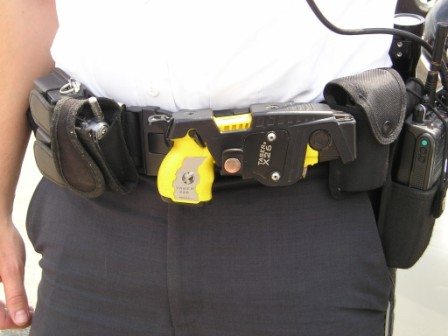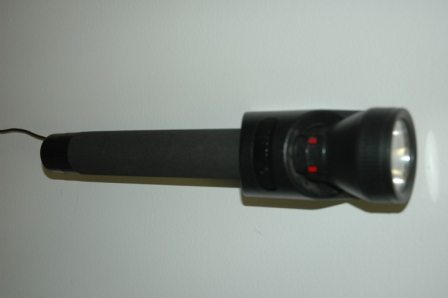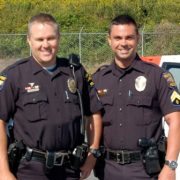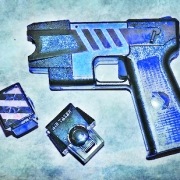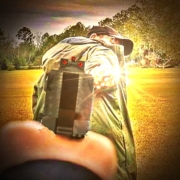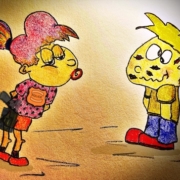Before Tasers, Bean Bags, and Pepper Spray: Those Were The Days
A Taser delivers an electrical charge that disrupts muscle function. The devices are carried on the officer’s non-gun side and they’re often made of brightly colored material. The purpose of these two important details is to prevent officers from confusing the non-lethal Taser with their definitely lethal handgun.
There are also handcuffs available that are capable of delivering an electrical charge to the wearer. These cuffs (stun cuffs) are often used when transporting jail or prison inmates, especially potentially dangerous or high-risk prisoners.
Stun belts are also available, especially for use in prisons. Prison guards/corrections officers (CO’s) train with the belts and are often called on to demonstrate its effects. Officers refer to the experience as “riding the belt.”
You know, many years ago officers didn’t have the luxury of non-lethal devices, such as Tasers, pepper spray, cages in police cars, rubber bullets, bean bags, etc. Instead, we had to rely on fast talking and sheer muscle power to get out of jams.
Sometimes, the only thing that kept us from getting hurt, badly, was using a heavy metal flashlight to deliver a gentle “love tap” to an attacker’s thick skull (an aluminum shampoo). Of course, that’s no longer an option, but the tactic saved my butt more than once. And there’s one such event will forever stand out in my mind.
Rechargeable flashlight
While arresting an unruly man, a guy who just happened to be twice my size (and I’m not small), my future prisoner who was already madder than a mosquito in a mannequin factory, decided he was allergic to handcuffs. And, during a brief struggle, my neck somehow wound up in the gentle grasp of the behemoth’s skillet-size hands. In other words, he was choking me with every ounce of strength he could muster. I couldn’t breathe, and I knew then how it must feel to be the icing inside a pastry bag, because he was squeezing so hard that I thought my eyes would squirt from their sockets at any moment.
The thug had me pinned against a wall in a position that made going for my gun (a .357 in those days) impossible.  However, I finally managed to get a hand on my metal Maglite. So I starting swinging (short strokes because of the odd angle), hoping to force the guy to release his grip. Finally, after several hard thwacks and whacks to his head, he let go. And, as they say, it was game on! I went at him like a duck on a June bug.
However, I finally managed to get a hand on my metal Maglite. So I starting swinging (short strokes because of the odd angle), hoping to force the guy to release his grip. Finally, after several hard thwacks and whacks to his head, he let go. And, as they say, it was game on! I went at him like a duck on a June bug.
I finally got that enormous moose handcuffed. However, my car was not equipped with a cage to put him in for safekeeping (none of our cars had cages back then), so I made him ride up front with me. And I made a point to let him know that my gun was in my hand with my finger on the trigger, and if he so much as looked at me wrong I’d shoot him. He behaved nicely on the ride in.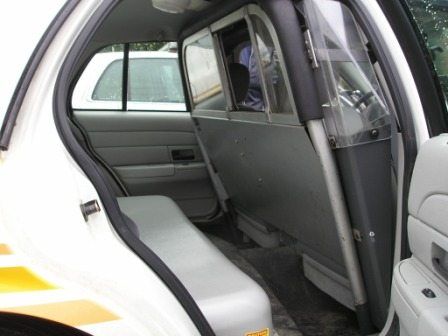
Aluminum and Plexiglass divider that we did not have but wished we did. ——————->
My prisoner and I must have been a real sight when we arrived at the jail—clothes torn, badge ripped from my shirt, bloody lips, flashlight-shaped knots on his head, fingerprint-shaped bruises on my neck, and more. But that was how it was back then.
Yep, those were the good ‘ol days …
Aluminum and Plexiglass divider that we did not have but wished we did.
“Seats” for Virtual MurderCon interactive event are filling quickly!
I urge you to sign up asap to reserve your spot at this unique opportunity, one that may never again be available. This is a live event, presented in realtime. Q&A is available at the end of each presentation. In addition, the final session is live panel and Q&A discussion with each of the experts. So have your questions ready, because this is the time to gather the extraordinary details that will make your book zing with realism.
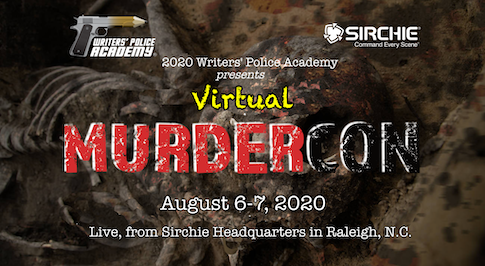
Registration to the Writers’ Police Academy special event, Virtual MurderCon, is scheduled to end at midnight, July, 31, 2020. However, registration will close when all spots are filled, and it certainly looks like the event will soon be sold out. Again, this is a rare opportunity for writers to participate in virtual, live and interactive, “for law enforcement eyes only” training. This incredibly detailed, cutting-edge instruction has never before been available to writers, anywhere. Until now.
The 2020 stellar cadre of instructors include (to name a few) David Alford, a retired FBI Special Agent with 21 years of experience investigating violent crimes, terrorism and other cases. He was one of the founding members of the FBI Evidence Response Team (ERT) and conducted crimes scene searches on domestic and international violent crimes and 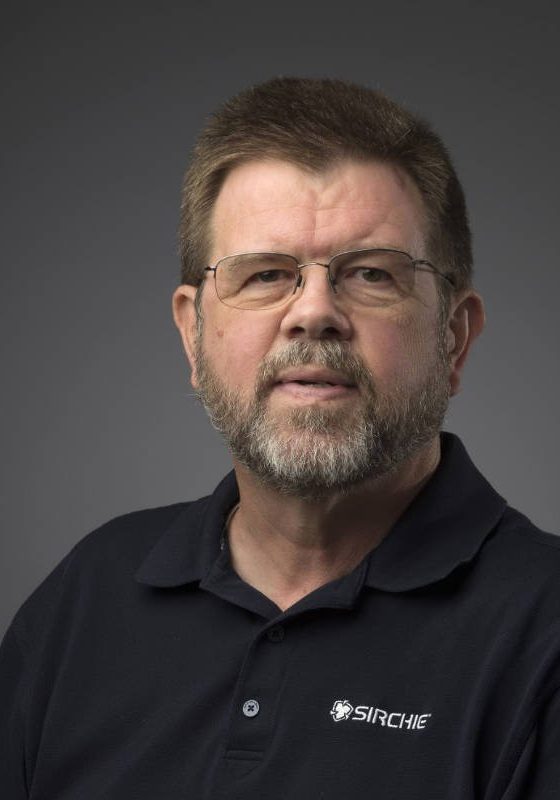 bombings, including the Polly Klaas kidnaping and murder, the Unabomber’s cabin, and the 9/11 Pentagon scene. He worked in the Denver and San Francisco field offices and completed his career at Quantico in the FBI Lab ERT Unit. During the 6 years in the FBI Lab, he was primarily responsible for overseeing and teaching basic and advanced crime scene courses throughout the US and many other countries.
bombings, including the Polly Klaas kidnaping and murder, the Unabomber’s cabin, and the 9/11 Pentagon scene. He worked in the Denver and San Francisco field offices and completed his career at Quantico in the FBI Lab ERT Unit. During the 6 years in the FBI Lab, he was primarily responsible for overseeing and teaching basic and advanced crime scene courses throughout the US and many other countries.
In the 6 years before the FBI, David was a Forensic Serologist, Hair and Fibers Examiner and Bloodstain Pattern Analyst for the Kentucky State Police Crime Lab. After retirement, David taught crime scene courses around the world on behalf of the FBI and US State Department. David has been with Sirchie as an instructor and sales representative for Sirchie’s RUVIS and ALS products for the last 10 years. David loves teaching and allowing students to learn through hands-on training.
 Heather Hanna is a forensic geologist specializing in the analysis of rock fragments and mineral grains in soils as trace evidence. Since 2009, she has been involved in multiple forensic investigations and has testified as an expert witness in four first degree murder trials, the first of which set a legal precedent in Wake County for using geochemical analysis of mineral grains in court. As a result of her forensic work, she has been an invited speaker at many law enforcement conferences and continuing education programs including the Conference of District Attorneys, the North Carolina Criminal Information Exchange Network, the North Carolina Homicide Investigators Association, and the North Carolina International Association for Identification. She has also presented her forensic work at national and sectional Geological Society of America meetings and as an invited speaker for the Soils Science Society of North Carolina.
Heather Hanna is a forensic geologist specializing in the analysis of rock fragments and mineral grains in soils as trace evidence. Since 2009, she has been involved in multiple forensic investigations and has testified as an expert witness in four first degree murder trials, the first of which set a legal precedent in Wake County for using geochemical analysis of mineral grains in court. As a result of her forensic work, she has been an invited speaker at many law enforcement conferences and continuing education programs including the Conference of District Attorneys, the North Carolina Criminal Information Exchange Network, the North Carolina Homicide Investigators Association, and the North Carolina International Association for Identification. She has also presented her forensic work at national and sectional Geological Society of America meetings and as an invited speaker for the Soils Science Society of North Carolina.
 Detective Sergeant Jeff Locklear, a 21-year veteran law enforcement officer, currently works with the Fayetteville North Carolina Police Department as a homicide police specialist and training officer.
Detective Sergeant Jeff Locklear, a 21-year veteran law enforcement officer, currently works with the Fayetteville North Carolina Police Department as a homicide police specialist and training officer.
As a homicide detective he’s been involved with over 350 homicide investigations. He’s also investigated hundreds of violent felonies including rapes, robberies, aggravated assaults, and missing persons.
During his career he has responded to hundreds to death scenes such as suicides, homicides, accidental deaths, and natural and unexplained deaths.
Detective Locklear has conducted thousands of interviews of violent offenders, including cases featured on 48 hrs (The Kelli Bourdeaux murder), Swamp Murders, NCIS – The Cases They Can’t Forget: The Holley Wimunc Murder, Scorned Love Kills 2014, The Today Show, and numerous other news and media outlets, such as People Magazine and Time Magazine.
He’s a founding member of both the 2008 Fayetteville Police Homicide Squad and the 2016 Fayetteville Police Violent Criminal Apprehension Team (VCAT). In addition, he’s served as sheriff’s deputy , Forensic Technician, Patrol officer , Crimes against persons detective, homicide detective, gun and gang task force detective, and as a Violent Criminal Apprehension Team Detective.
Detective Locklear has presented cases workshops at a number of conferences and events, including the North Carolina Homicide Investigators Conference, North & South Carolina Arson Investigators Conference , Fayetteville State University (Criminal Justice), Fayetteville Technical Community College (Registered Nursing students), Methodist University, and more.
Having spent the majority of his career investigating violent crimes, Detective Locklear has a unique and vast perspective of being the first officer on scene, the Forensic technician processing the scene, the detective investigating the crime, and the detective whose task it is to track down and capture the suspects who committed the crimes. He’s a dynamic speaker who can “escort you” to a crime scene, “walk you” through what happened, “show you” who did it, and then “lead you” to where the suspect fled after committing the offense.


